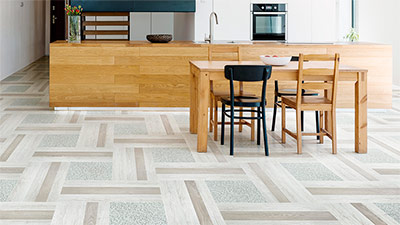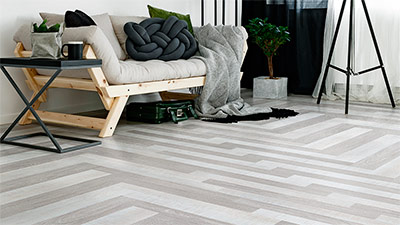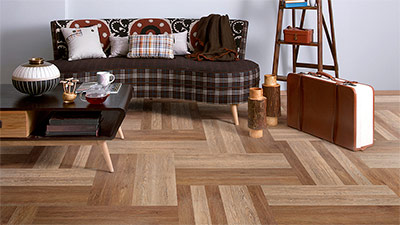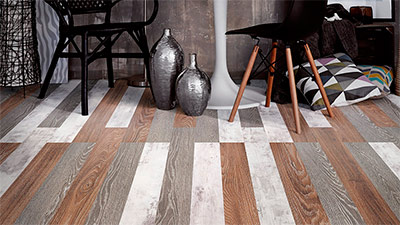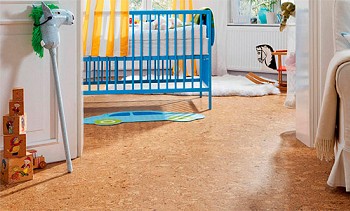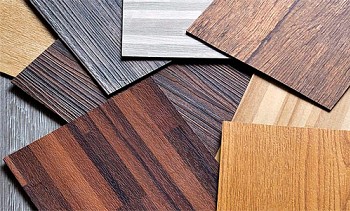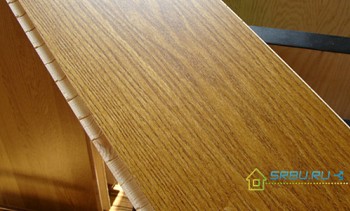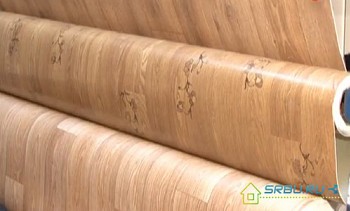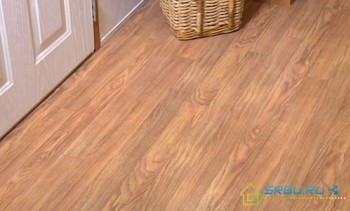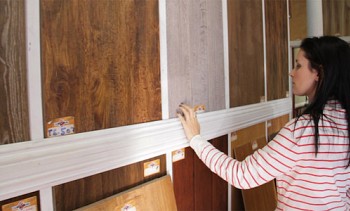Vinyl floors: structure, types, advantages and disadvantages
Vinyl flooring appeared on the market in the 30s of the last century. Initially, it was intended mainly for industrial premises, but consumers already appreciated its unique characteristics. As the technology has evolved, the vinyl floor has improved, gaining more and more valuable properties and reaching a new level of quality.
As a result, today it is successfully used not only in industrial shops and various commercial and public buildings, but also in residential interiors, making a worthy competition to other floor coverings.
What is a vinyl floor? What are its advantages that make this flooring so popular? Does it have flaws that could become an obstacle to your use of it? We will try to answer all your questions.
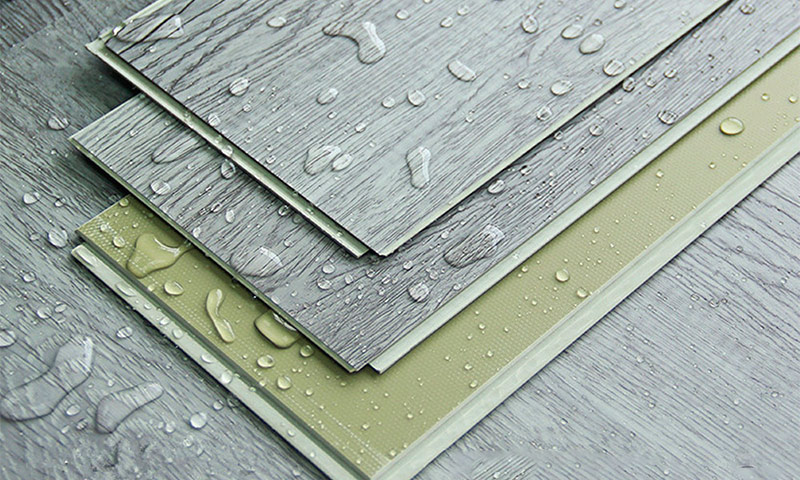
Vinyl flooring: what is it and what is its structure
Vinyl flooring is a multilayer material consisting of polyvinyl chloride, quartz sand and plasticizers. The number of layers may vary depending on the type of flooring. With an increase in the number of layers of vinyl, not only does the price of the material increase, but its technical characteristics also improve.
Vinyl Flooring Device:
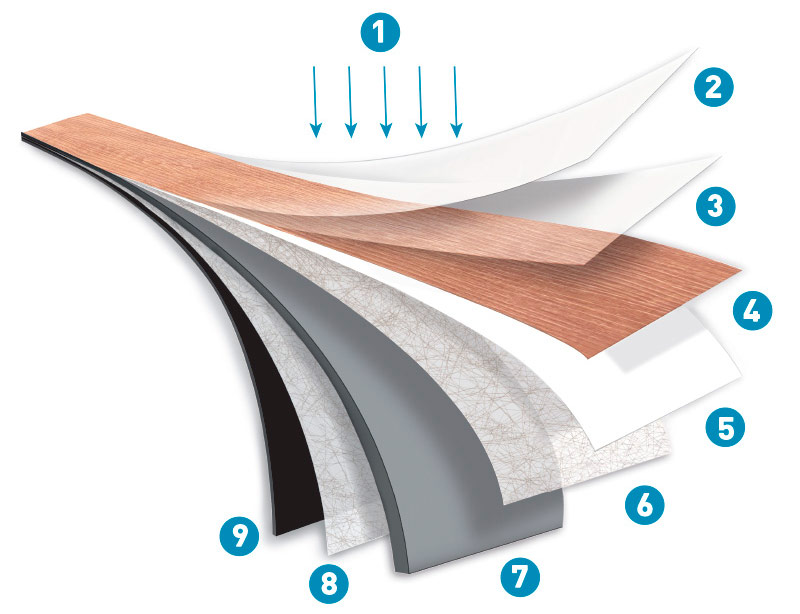
1. The topmost layer protects the material from the damaging effects of ultraviolet radiation and, accordingly, preserves color and pattern. Thanks to this surface vinyl film, the flooring does not fade or fade in the sun.
2. The transparent eighth layer with a thickness of about 0.5 mm is designed to protect all lower layers from mechanical stress - abrasion and scratching. The presence and thickness of this layer determines the wear resistance class of the vinyl floor.
3. The seventh layer is the main volume of the vinyl coating and, in addition, performs protective functions.
4. The sixth layer is decorative. It is he who determines the design and color of the flooring. It depends on it which surface your vinyl floor will imitate - wood, cork, marble, sand, pebbles or something else. The drawing is applied using heliogravure technology or through screen printing, which allows for high image quality.
5. Reflective layer.
6. The fourth layer, reinforcing, gives the vinyl floor strength and special wear resistance.
7. The third, quartz-vinyl, layer is made by pressing polyvinyl chloride, quartz sand (80% of the composition) and plasticizers. The mineral additive makes the material durable, tough and resilient. This layer accounts for the main mechanical load. Due to the presence of a significant amount of quartz in the coating, it is sometimes called a quartz-vinyl floor.
8. The second layer is fiberglass, which performs the function of reinforcement.
9. The lowest layer, the PVC backing, is not available on all vinyl flooring. The purpose of the substrate is to dampen vibration and shock noise: thanks to it, you can walk almost silently on the vinyl floor.In addition, the vinyl backing prevents moisture and dirt from entering the subfloor.
The layers are connected to each other by hot pressing.
Once again, not all of the above layers should be part of the vinyl flooring. In the simplest version, there can be only four of them: basic vinyl, reinforcing, decorative and protective. The fewer layers, the thinner the material (usually vinyl thickness varies from 1.5 to 3.5 mm, but thicker coatings are also found - up to 10-12 mm).
The thin vinyl floor, according to many users, is not warm enough, which means that additional measures are required to achieve the proper level of comfort. On the other hand, reducing the number of layers in the material can reduce its cost. This gives you the opportunity to choose a coating with the best value for money.
Types of vinyl flooring and their features
Vinyl flooring is available in several varieties, differing in size, composition and device:
Vinyl (PVC) tile and laminate
Vinyl tile is a relatively small square sheet of vinyl coating. The length of the side of the square in different collections or from different manufacturers can vary from 300 to 600 mm, but the most common sizes are 450-470 mm.
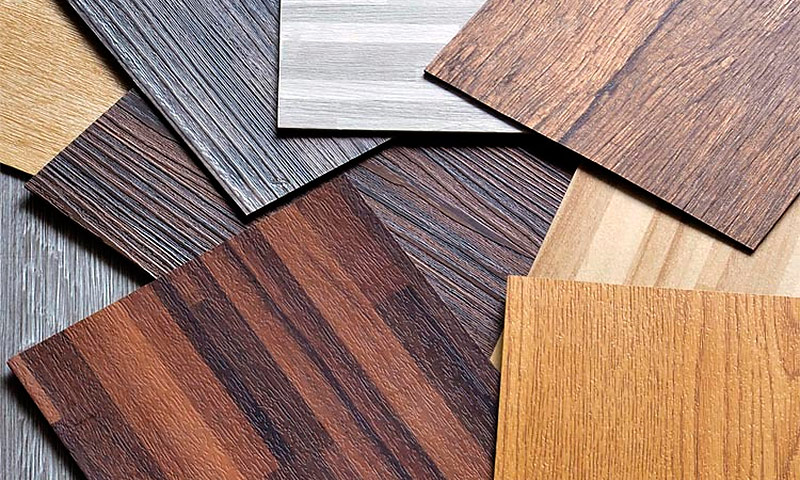
Vinyl tile.
Vinyl laminate - rectangular lamellas imitating a laminate. The size of vinyl “boards” is usually close to the size of the original (the latter is optional - it all depends on the manufacturer).
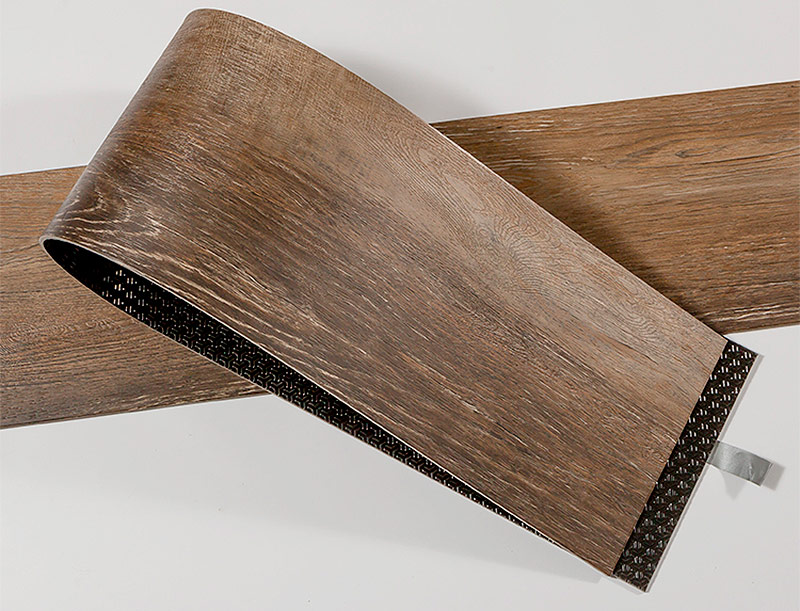
Vinyl laminate.
Quartz-vinyl tile and laminate
Quartz-vinyl tile is characterized in that it includes a layer of polyvinyl chloride, quartz sand and plasticizers. Above, we considered the device of a quartz-vinyl flooring. In this case, the quartz-vinyl coating can be made on the basis of a flexible or rigid base.
Flexible quartz-vinyl tile.
Flexible quartz-vinyl tiles appeared first and is a modified version of ordinary PVC tiles.
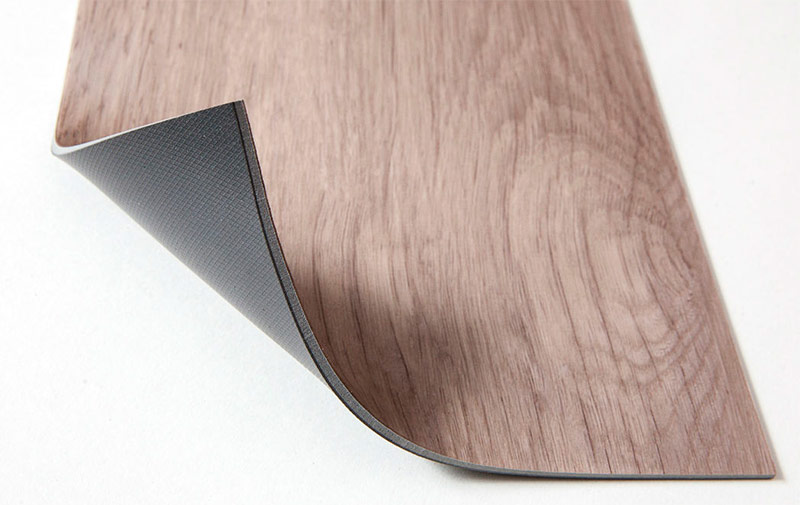
Flexible quartz-vinyl tile.
Quartz-vinyl tile on a rigid basis.
Quartz-vinyl tile or laminate on a rigid basis, appeared later. Today, this material is gaining more and more popularity in comparison with vinyl and quartz-vinyl analogues. For laying quartz-vinyl tile less requirements are placed on the base, it can be operated together with a warm floor, this material is thicker and provides better thermal insulation and noise protection.
To install this coating, a castle method is used, similar to a conventional laminate.
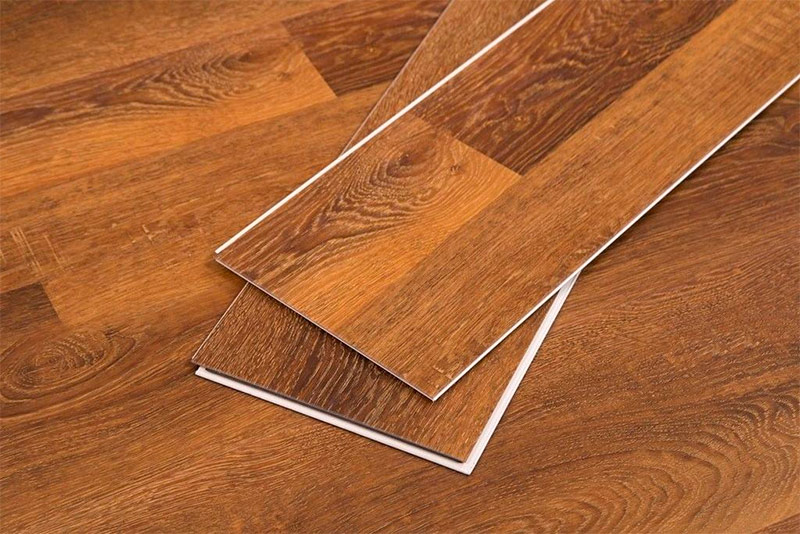
Quartz-vinyl tile on a rigid base.
Vinyl coatings can differ not only in the size of individual fragments, but also in the fixation method, i.e. by the method of attaching them to each other or to the base.
Adhesive Vinyl
The vinyl coating is glued to the base of the floor using special adhesives. This procedure is time-consuming, although it does not require any special qualification from the contractor.
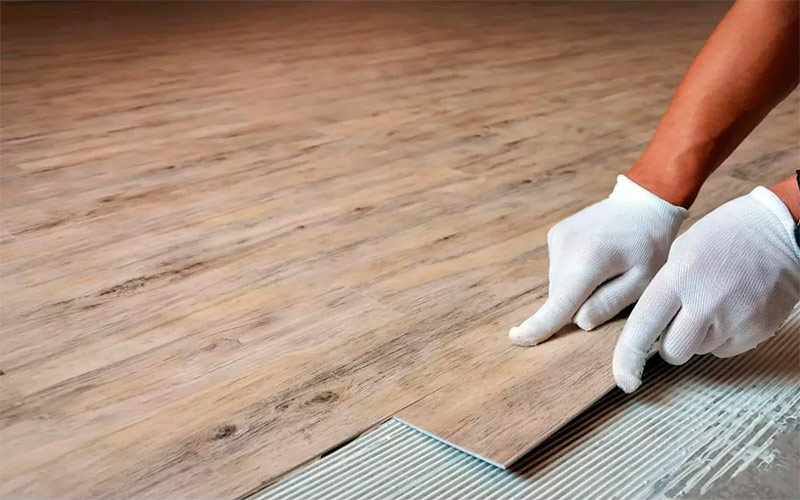
Adhesive vinyl floor.
Self adhesive backing
Quite often produced vinyl fragments already have an adhesive base. To lay such a floor covering you don’t have to buy additional adhesive mixtures - just remove the protective paper and stick the vinyl fragment to the base. The adhesive applied to the substrate by the manufacturer instantly sets on almost any clean surface.
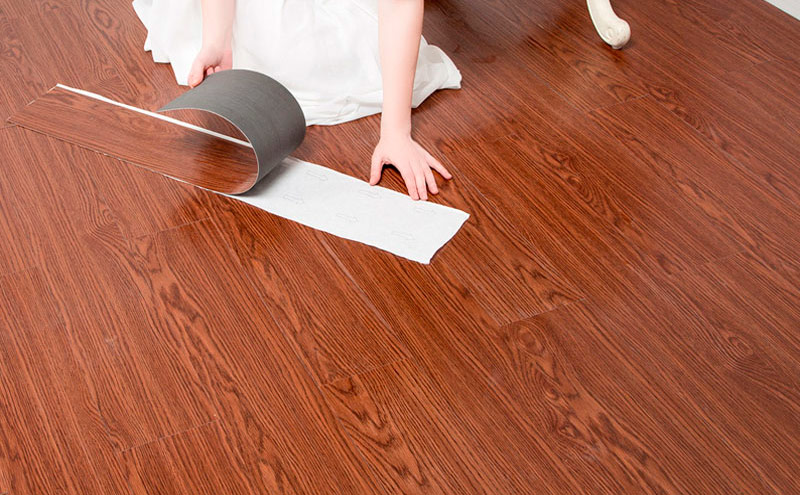
Vinyl coating with a self-adhesive base.
Castle connections
Quartz-vinyl tile and laminate, produced today, have special plastic fasteners such as tenon groove (Uniclic). Such a floor is laid similar to a conventional laminate.Thanks to the locks, fragments of the flooring are tightly bonded to each other, forming a solid floating coating, which is an excellent solution for rooms with heavy traffic.
Often, on the protruding part of the castle joints, manufacturers apply an adhesive composition (self-adhesive tape) for even more reliable fixation.
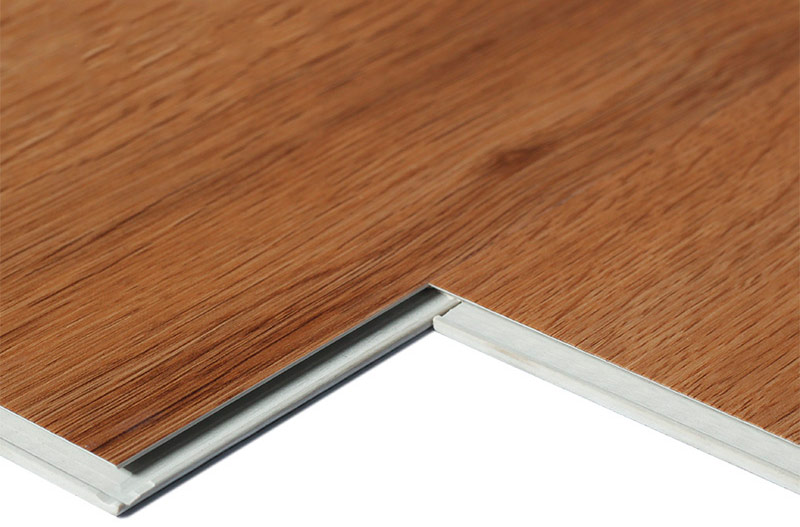
Castle quartz vinyl.
Pros of vinyl flooring
Any material has its pros and cons, and a vinyl floor is no exception. This question cannot be left unanswered: it is of interest to potential buyers in the first place - without this, it is impossible to make a decision on the purchase of goods.
Let's start with the "sweet", i.e. with virtues ...
Durability and abrasion resistance
The undoubted advantage of vinyl flooring is its high strength and resistance to abrasion. This is especially true of quartz-vinyl coatings. It is these qualities of quartz vinyl that make it so popular with buyers. The material is endowed with similar properties thanks to the polyvinyl chloride itself, which is characterized by high strength and at the same time ductility, and additives of quartz sand.
The vinyl coating does not crumble or crack, is not afraid of falling heavy objects, dragging furniture and women's heels. Even the cheapest quartz-vinyl floor can last a dozen years, and a coating more expensive will not lose its attractiveness in three to four decades.
Each manufactured floor covering is attributed a certain wear resistance class, depending on its strength characteristics:
- Household vinyl coating of 23-31 classes, having a minimum thickness, is intended for decoration of apartments and residential buildings. Service life is about 5-6 years.
- Vinyl coating for commercial use of 32-42 classes is designed for installation in offices, small shops and other premises with a relatively high traffic. It is characterized by a large thickness, increased resistance to abrasion, the presence of antistatic properties. Service life is an average of 10 to 15 years.
- Special coating of class 43 is intended for rooms with a particularly high mechanical load on the floor - sports facilities, trading floors of supermarkets, production halls, garages, etc.
It makes no sense to purchase commercial cover if you plan to lay it in a private house - the abrasion resource of household vinyl will be quite enough. Buying “with a margin” will cause an unjustified excess of the budget allocated for repair, because the higher the wear resistance class of the floor covering, the higher its cost.
Resistance to marks and scratches
Parents of small children and pet owners especially value vinyl floors for their resistance to scratches and marks. Whatever your offspring or four-legged pets are up to, you can not worry about the presentable appearance of the floor covering. Will not remain on vinyl and dents from furniture legs.
However, to make sure that this is the case, check before buying whether this vinyl coating has a protective layer. Without it, vinyl still gets dirty and scratched, which means that over time, it may be necessary to dismantle individual fragments.
Water resistant
Vinyl coating is invulnerable to water, it performs well with constant exposure to moisture. As a result, such a floor can be laid in wet rooms (bathroom, toilet, laundry, kitchen, hallway): the material can easily withstand such operating conditions, and in case of emergency it will minimize the likelihood of flooding of neighbors.
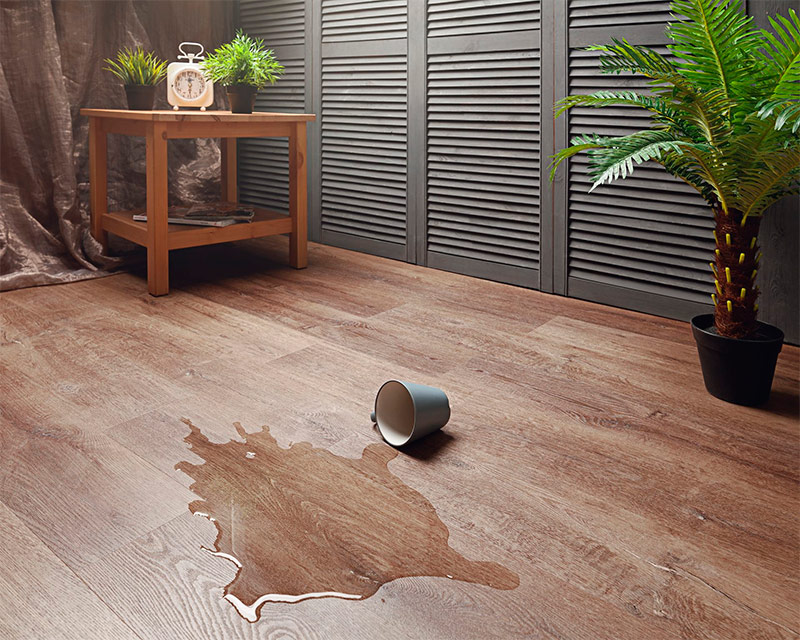
The coating is not threatened even by prolonged contact with water.
Biological resistance
Due to the absence in the composition of the vinyl coating of components of natural origin susceptible to decay, it is characterized by excellent biological resistance. Owners of private houses very often prefer vinyl floors, since fungi and mold do not grow on this material. In rodents, it does not cause interest either.
Attractive appearance
Aesthetics is no less important than practicality, especially when it comes to choosing a material for decorating a living room. Modern vinyl floors are exquisitely beautiful; in terms of the richness of their color scheme and the variety of possible patterns, they are practically unrivaled. These floor coverings boast an almost infinite number of decor options.
Vinyl gives you the opportunity to imitate a wide variety of surfaces - wood, cork, granite, marble, terracotta and many other natural materials of various colors and textures. You want, and under your feet - a green lawn. Or maybe you prefer sand and pebble scattering on the seashore?
A big plus is not only the availability of material in all kinds of shades and patterns, but also the alleged design variability. If you wish, you can combine vinyl tiles from different collections, putting into practice your original plan.
Variants of combining vinyl tiles of various collections.
It is worth noting that the new floor covering will retain its presentable appearance for many years, even if it is laid in a room well lit by daylight. Unlike wood and many other materials, vinyl does not fade when exposed to ultraviolet rays.
Dimensional stability
Unlike wood, parquet boards and a number of other materials used as flooring, vinyl is insensitive to changes in ambient air parameters. No matter how much the temperature and humidity in the room fluctuates, the size of the vinyl floor will remain unchanged.
This means that when laying this flooring there is no need to leave the so-called temperature seams (compensation gaps) around the perimeter of the room, and, therefore, you can do without wide skirting boards and without decorative sills at the border of the premises.
Low maintenance
The vinyl floor is easy to use - the coating does not require any special care. Vinyl tolerates frequent wet cleaning and the use of any cleaning products. However, try not to overdo it: we strongly advise against using coarse abrasive products and harsh industrial cleaners to remove contaminants. To give the vinyl coating a shine, special products (washing solutions and mastics) suitable for linoleum are suitable.
Despite the high strength and wear resistance of the vinyl coating, when moving heavy furniture along it, we recommend using protective pads on the legs or laying cardboard on the floor.
Easy installation
The method of laying the vinyl floor depends on the type of coating chosen:
1. Glue connection: glue is applied to the concrete screed, then the vinyl coating (tile or roll material) is laid and leveled using a rubberized ramming roller.
2. Vinyl with a self-adhesive base: the protective film is carefully removed, after which the tile is laid on the floor and leveled - first with your hands, and then with the help of a rubberized roller (trimming and adjustment of the tiles is carried out until the self-adhesive is removed).
3. Castle connection: laying of the vinyl coating (laminate or tile) is performed in the same way as in the case of the laminate, i.e. by sequentially coupling the “locks”.
Mounting a vinyl laminate with lock joints is a little easier, “putting” tile vinyl on the glue is a little more difficult. But no matter what kind of vinyl flooring you choose, believe me, you can easily cope with the installation.
It’s just that in one case it will take you a little longer to get used to than in the other. On the whole, this work does not require any special skills and abilities from its executor; it is even a beginner in the repair and construction business.
Light weight
The weight of the vinyl flooring is relatively small - about 3-5 kg / m2. This is very important in terms of ease of transportation of material and handling.
Cons of a vinyl floor
So, the vinyl floor does not scratch and does not let water through, it is beautiful and unusual in appearance, easy to install and unpretentious in maintenance. And in terms of strength and durability, it is almost completely unmatched among modern flooring. The abundance of positive qualities, of course, attracts the attention of potential buyers to this material.
But nothing perfect exists in this imperfect world. So ideal material at first glance has its drawbacks. For some, they can be very significant.
Artificial material
Vinyl coating is an artificial material, and, of course, it can never be compared to a natural tree in its ability to create coziness and comfort in a room. But on a tight budget, vinyl flooring is a good fit for home or office space.
There is another aspect that directly relates to the artificial origin of this flooring. One of the main factors in choosing this or that finishing material for many consumers today is its safety for health. From this point of view, vinyl floors are preferable to many other materials: they do not contain volatile organic substances harmful to the body that can cause allergic reactions or respiratory diseases - phenols, phthalates, etc.
This statement is true, however, only if you purchase a quality product, so be sure to read the hygiene certificate for products before buying.
High base requirements
Vinyl coating is usually laid on a concrete screed. Before starting the main work, the foundation should be prepared.
At first, the floor should be flat. Fill all cracks and potholes, eliminate all bulges. There should not be significant differences in height. The thinner the flooring, the more carefully you need to prepare the base.
Secondly, the surface of the subfloor should be thoroughly cleaned of sand, dust and dirt before laying. Hard particles (as well as base defects) that fall under the vinyl floor can cause damage to the coating over time.
Thirdly, the concrete base must be dry (its moisture content should not exceed five percent). Degrease the surface, remove traces of paint, oil, etc. To improve the adhesion with the floor to be laid, it is recommended to primer the concrete screed.
You’ll have to tinker a bit. But, on the other hand, the question is reasonable: how many floor coverings are there, when laying which can be treated with caution in the stage of preparation of the base?
Chemical pigmentation
Vinyl is a chemically inert material, but there are exceptions to any rule. In particular, he does not “love” the neighborhood with rubber: with prolonged contact, they react, resulting in discoloration of certain sections of the floor. That is why in the room where the vinyl floor is laid, rubber mats and walking in shoes with rubber soles should be abandoned.
A low-quality vinyl floor without a protective layer often turns yellow over time. The reason for this is usually exposure to bright sunlight.
For modern high-quality vinyl coatings, yellowing is not characteristic.
Fire hazard
The composition of the vinyl floor includes non-combustible mineral chips, however, a significant mass of the coating falls on components of organic origin, which will easily ignite in case of fire. Moreover, the burning of the material itself is not the worst. Under the influence of high temperatures, vinyl becomes a source of toxic substances.
In this regard, this flooring is not recommended for use in rooms with increased fire hazard, for example, in kitchens where there are sources of open fire.
Lack of recyclability
The average consumer rarely thinks about what happens to old-fashioned material or its scrap / waste. But in vain ...
Vinyl waste is dumped in urban landfills, and there is nothing good about it. Vinyl is not biodegradable, and its natural destruction requires many decades. Cost-effective and safe methods for its chemical processing have not yet been found.

